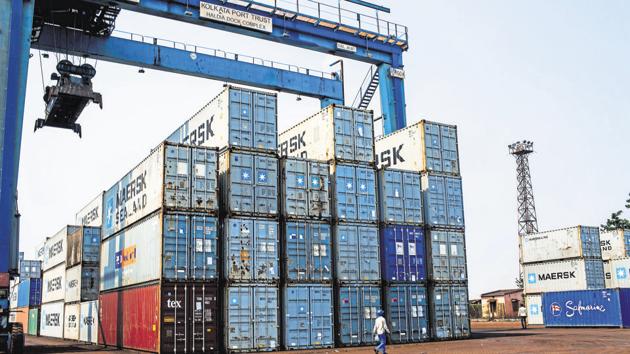Disentangling India’s trade surplus
Exports are slowly bouncing back, even as the fall in imports in certain categories isn’t bad news
In June, India recorded its first trade surplus in the last 18 years, the first such month since January 2002. On a year-on-year basis, the Indian merchandise exports fell 12.4%. The imports fell 47.6% over last June. The cumulative effect was a trade surplus of $790 million.

Earlier in May 2020, the trade deficit was $3.15 billion, where the exports had fallen by 36.5% and imports by 51%. This resulted in the trade deficit shrinking by over 79%. In April 2020, India registered a trade deficit of $6.8 billion, with exports falling 60.3% and imports falling by 58.7%.
Between April and June, as the economy gradually opened up and as buying centres also restarted business activities, the merchandise export contraction narrowed down from 60.3% in April to 12.4% in June. The rate of contraction in imports, however, has been more stubborn, moving from 58.7% in April to 47.6% in June.
So, while the June trade surplus reflects a demand weakness in the Indian economy, shackled by the states imposing their local versions of the lockdowns, which at the central level had started to ease in early June, it also reflects a sharp turnaround in the export activity.
Exports can be analysed in two broad categories — petroleum and non-petroleum commodities.
In June, the petroleum exports shrunk by 31.6% while the non-petroleum exports were down 10.1%. The global demand for petroleum products has been hit in a big way due to the Covid-19 pandemic, as it has in India. These exports have seen contraction in value terms over the years as crude prices have been benign.
What is, however, remarkable for June exports was that the non-petroleum category bounced back to only 10.1% contraction over the last year. In April 2020, the non-petroleum exports had fallen by 59.3% over April 2019. So June 2020, in fact, signified a very strong comeback. Despite facing uncertain global demand and supply disruption, Indian exporters did well to resume operations and maintain order fulfilment flow.
Indian imports can be analysed in three broad categories — crude oil and petroleum products, gold and silver, and others.
In June 2020, India’s import of crude oil and petroleum products fell 55.3%, which was not unusual. With limited retail sales and restricted commercial goods movement, this demand remained tepid. Another factor in comparing imports in value terms is the pricing of the Indian crude oil basket. Between April and June 2019, the Indian basket was priced upwards of $70 a barrel, while between April and June 2020, the Indian basket peaked around $35 a barrel. So the import contraction in value terms would anyway have been far higher than the import contraction in volume terms. By all accounts, this is not a “bad contraction”.
In the months to come, this category of imports should catch up in volume terms as economic activity expands, though it should be kept in mind that the Indian crude oil and petroleum imports will also see long term trend adjustment due to factors such as higher electrification and gasification of the economy. These factors will produce an opposite impact on the import demand in terms of the volume composition.
The biggest percentage fall in imports was for the gold and silver category, which shrunk by 76%. As households focused on savings and social occasions such as marriages and festivals became austere, the shrinking of this import category was natural. In commonly accepted economic wisdom, gold and silver imports, and the Indian hoarding of these raw materials, have been long derided as foreign exchange guzzlers. In that sense, a fall in import in this category should actually be welcome news, albeit temporary. As social occasions open up in step with the opening of the economy, eventually, this demand will come back, perhaps attracting the opposite criticism then.
The third category of non-crude oil and petroleum products and non-gold and silver imports saw a shrinking of 41%. This category, which formed 65% of the total imports in June 2019, shrunk by the narrowest margin in June 2020 among the three categories.
These imports have elements such as capital goods, which signify industrial activity and demand as well as consumer goods, which signify consumption demand in India. Falling imports in this category do signify that the Indian domestic demand environment remained weak — but in a lockdown, this was to be expected.
In absolute terms, $8.6 billion of import difference — just over 40% of the total fall of $20 billion between June 2020 and June 2019 — came from crude and petroleum products and gold and silver. While these commodities are “raw materials”, their lesser imports here aren’t necessarily an adverse reflection on the economic situation.
A further $1.5 billion reduction came from the decline in coal imports. While domestic coal production in both May and June 2020 came in at 41 million tonnes, at reduced levels over corresponding months last year, they were enough to account for the levels of economic activity. So about half of the year-on-year import decline in June was purely situational, and not necessarily a negative reduction.
The Aatmanirbhar Bharat plan launched by the Narendra Modi government to propel the economy post the pandemic will also focus on non-crude oil and petroleum products and non-gold and silver imports to be localised, if not in entirety than in significant parts of the value chain. What will matter is how this category of imports evolves in the “open economy” part of the financial year and whether India succeeds in creating their local manufacturing alternatives.
(Data for this piece is sourced from reports in Hindustan Times and Mint and the ministry of commerce)
Aashish Chandorkar is a Pune-based public policy analyst
The views expressed are personal



